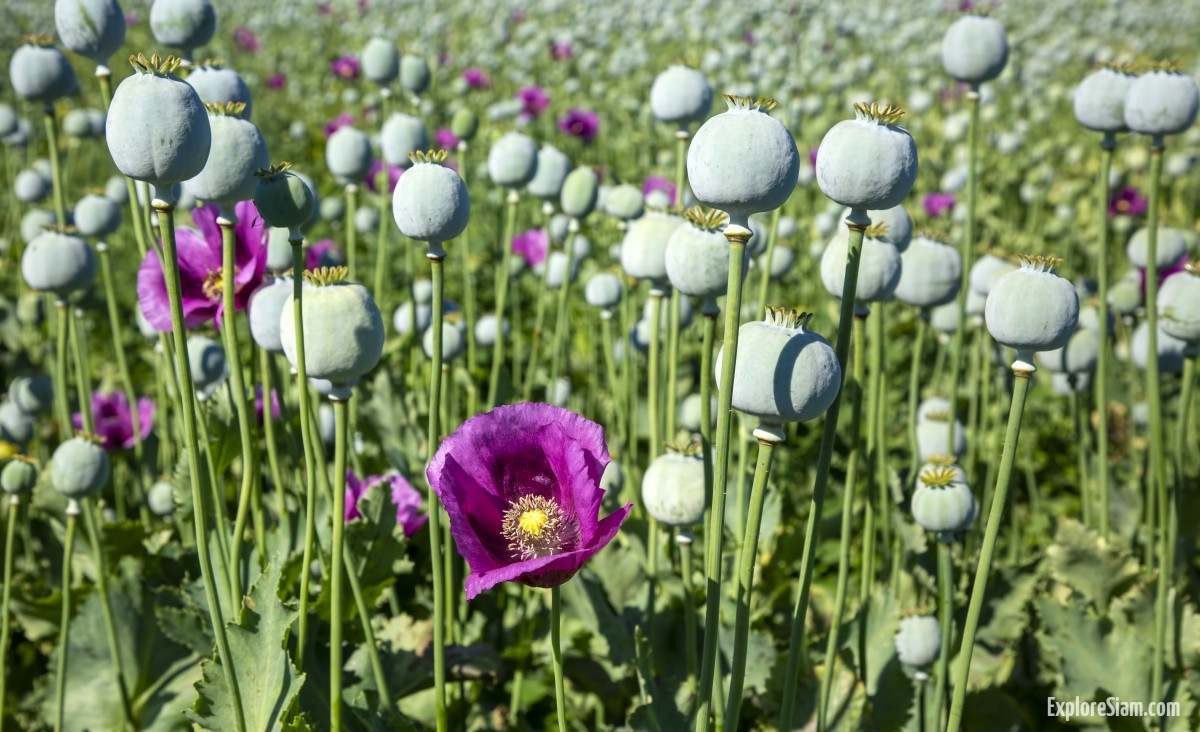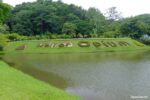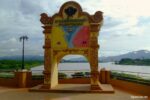Nestled in the heart of Chiang Saen, the House of Opium Museum offers a captivating glimpse into the region’s intriguing history with the opium trade. Founded in 1989 by Phatcharee Srimathayakun, this unique museum has grown from a modest collection of 300 artifacts to an impressive array of over 2,000 items. Here, visitors can explore the tools, traditions, and cultural nuances associated with the opium trade in the infamous Golden Triangle.
A Historical Perspective
The Golden Triangle, where Thailand, Laos, and Myanmar converge, has long been notorious for its opium production. The House of Opium Museum delves deep into this history, providing a comprehensive overview of how the opium trade shaped the region. The museum’s exhibits trace the journey of opium from its cultivation in poppy fields to its processing and eventual distribution. Through meticulously curated displays, visitors gain insights into the socio-economic impact of the opium trade on local communities.
The story begins with the introduction of opium poppy cultivation in Southeast Asia. Historical records, photographs, and detailed descriptions paint a vivid picture of the early days of the opium trade. The museum highlights the role of colonial powers and local warlords in promoting and controlling the opium trade, offering a nuanced perspective on the complex relationships that fueled this illicit industry.
Diverse Collections
One of the museum’s highlights is its diverse collection of opium paraphernalia. Visitors can marvel at intricately designed opium pipes, scales, and weights used by traders and consumers alike. These artifacts, each with its own story, offer a fascinating look into the daily life and rituals surrounding opium use. The museum also showcases cultural items from the local hill tribes, adding a rich ethnographic layer to the experience.
The collection extends beyond opium-related items to include traditional clothing, musical instruments, and handicrafts from the Akha, Lahu, and Yao tribes. These exhibits provide context for understanding the cultural and social environment in which the opium trade thrived. The museum’s detailed descriptions and interactive displays help visitors appreciate the craftsmanship and cultural significance of these items.
Educational Mission
The House of Opium Museum is more than just a repository of historical artifacts; it serves an educational mission. Through its exhibits, the museum aims to raise awareness about the dangers of opium addiction and the efforts to combat drug trafficking. Informative panels and multimedia presentations provide context and depth, making the museum a valuable resource for both tourists and scholars.
The museum hosts educational programs and workshops designed to engage visitors of all ages. School groups, in particular, benefit from guided tours that highlight the historical and contemporary issues related to the opium trade. Special exhibits and temporary displays keep the museum’s content fresh and relevant, ensuring that there is always something new to learn.
Community Engagement
The museum’s commitment to the local community is evident in its initiatives to preserve and promote the cultural heritage of Chiang Saen. By collaborating with local artisans and historians, the House of Opium Museum ensures that the stories and traditions of the Golden Triangle are passed down to future generations. This engagement fosters a deeper understanding and appreciation of the region’s history and culture.
Community projects include collaborations with local schools, cultural festivals, and support for traditional crafts. The museum’s gift shop features products made by local artisans, providing a source of income for the community and promoting sustainable tourism. The museum’s efforts to involve the community in its operations underscore its role as a cultural hub in Chiang Saen.
Visiting the Museum
Located in the picturesque town of Chiang Saen, the House of Opium Museum is easily accessible to visitors exploring northern Thailand. The museum’s welcoming atmosphere and thoughtfully designed exhibits make it a must-visit destination for anyone interested in the history of the Golden Triangle. With an admission fee of just 50 baht, the museum offers an affordable and enriching experience.
The museum is conveniently located near other attractions in Chiang Saen, such as the ancient city ruins and the Mekong River. Visitors can easily spend a day exploring the rich history and natural beauty of the area. The museum’s facilities include a café and rest areas, making it a comfortable stop on any itinerary.
The House of Opium Museum stands as a testament to the complex and often misunderstood history of the opium trade in the Golden Triangle. Through its extensive collection and educational initiatives, the museum provides a nuanced perspective on a pivotal chapter in the region’s past. Whether you’re a history buff, a cultural enthusiast, or a curious traveler, the House of Opium Museum offers a unique and enlightening journey through time.
For more information, visit the House of Opium Museum website: houseofopium.co





